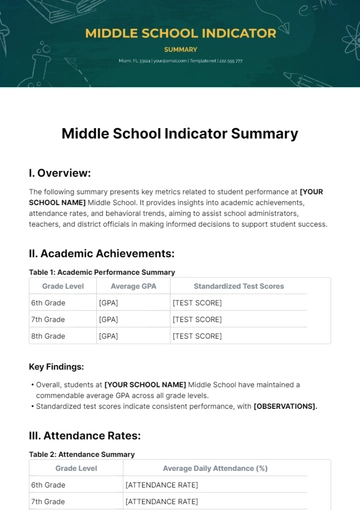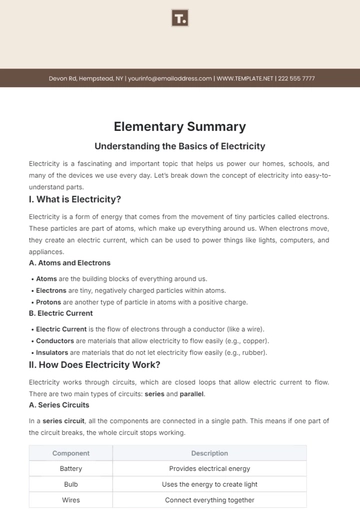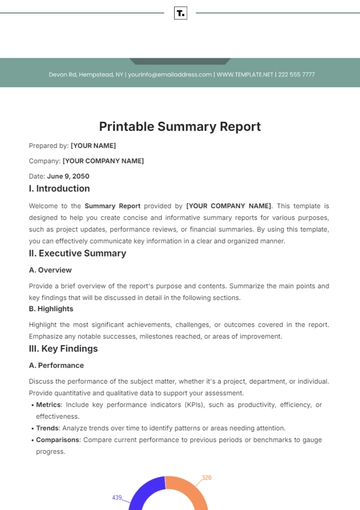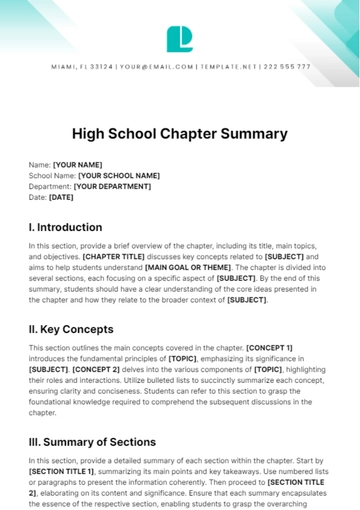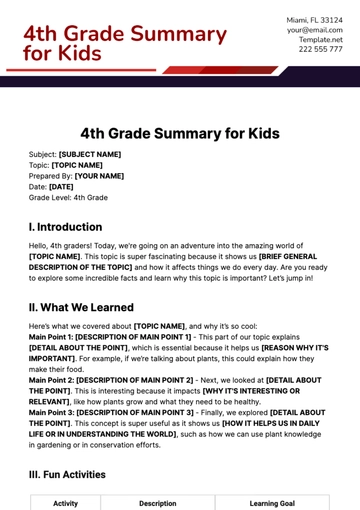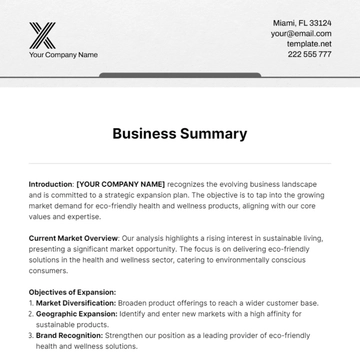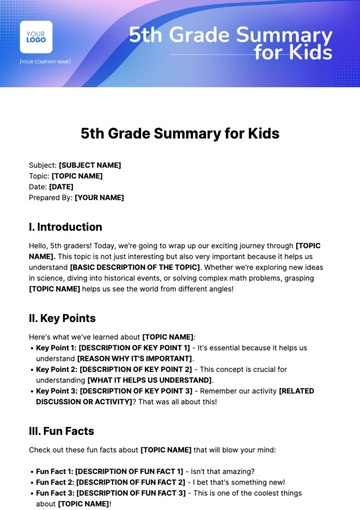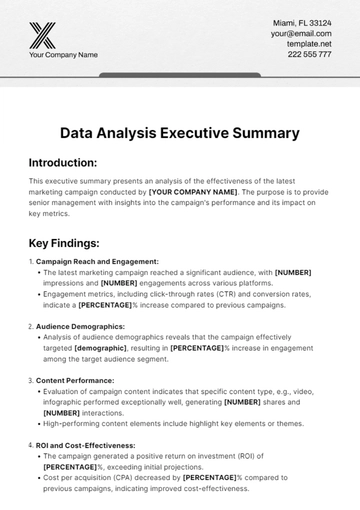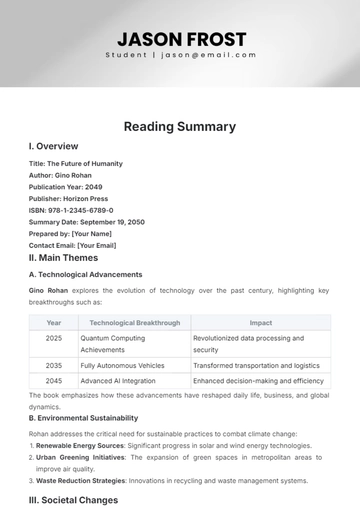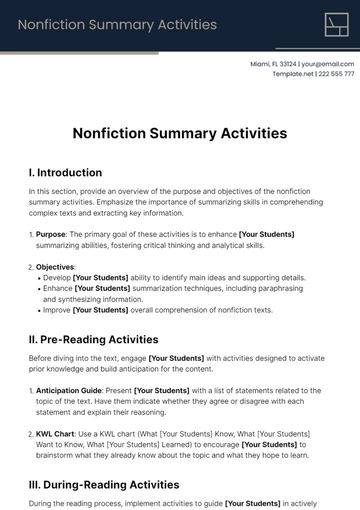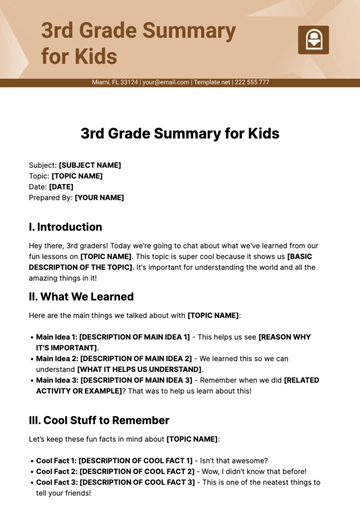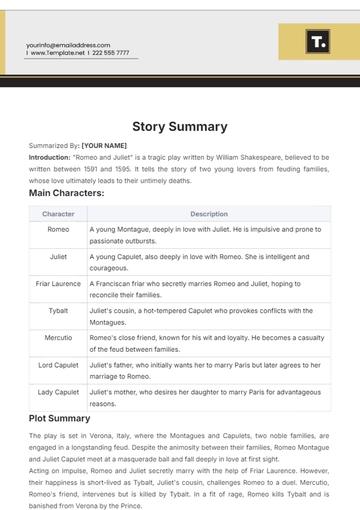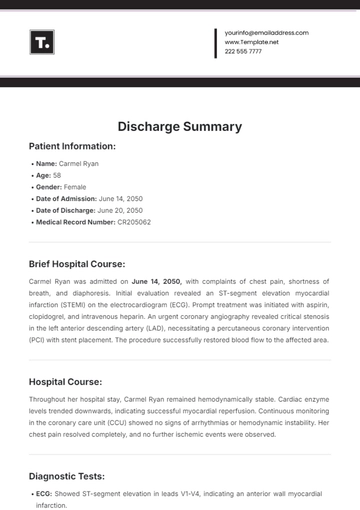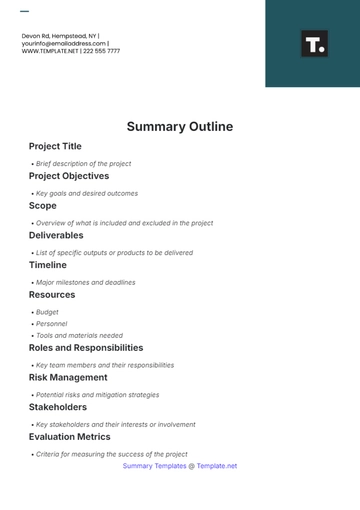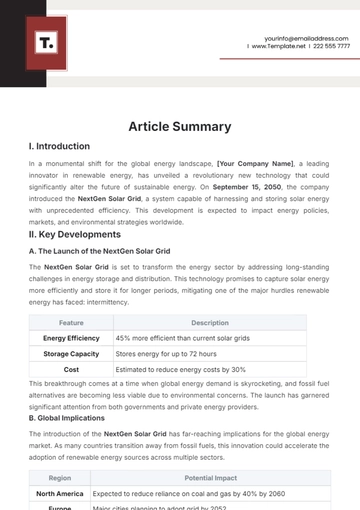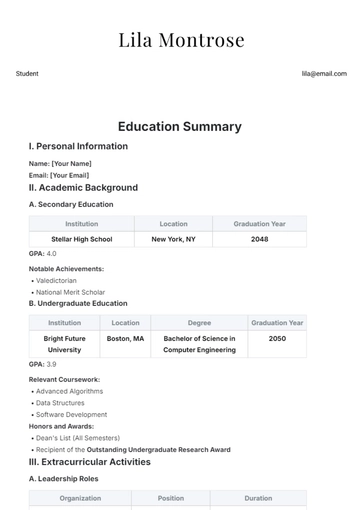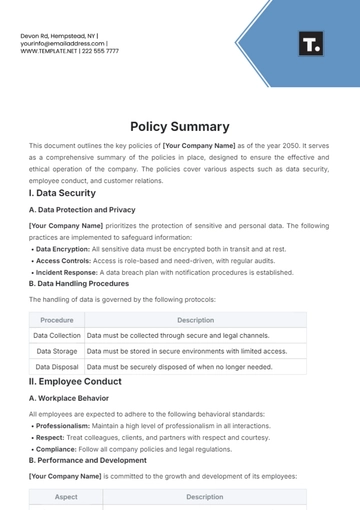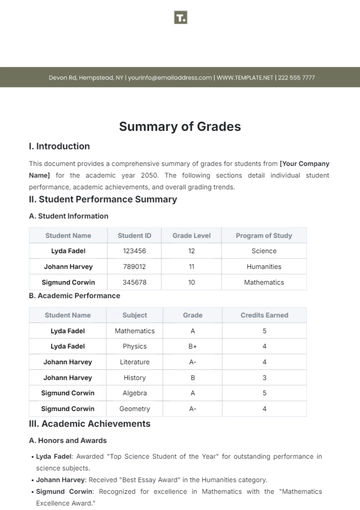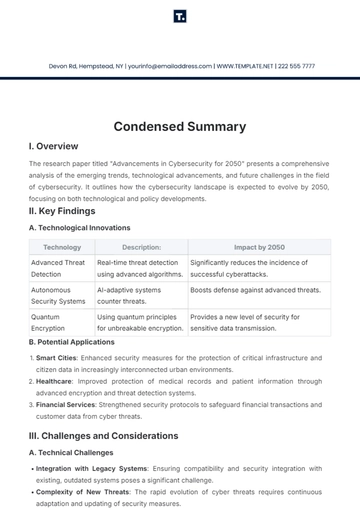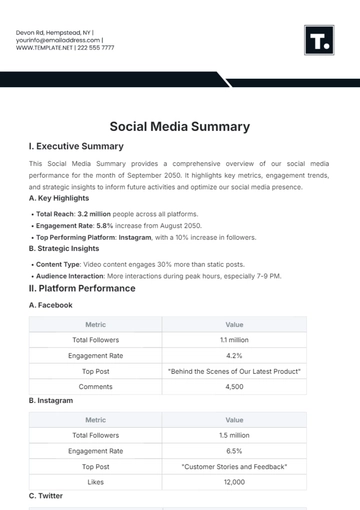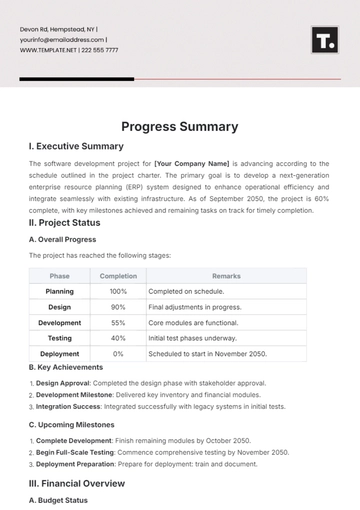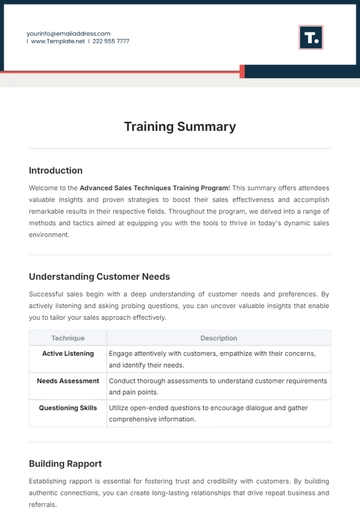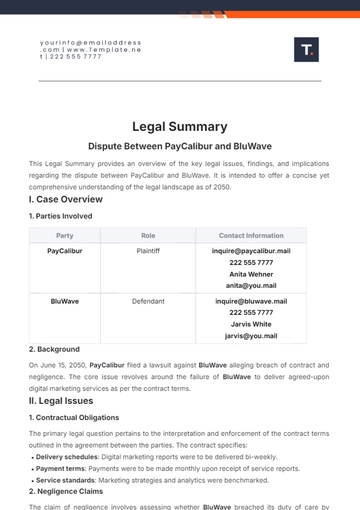Free Patient Care Summary
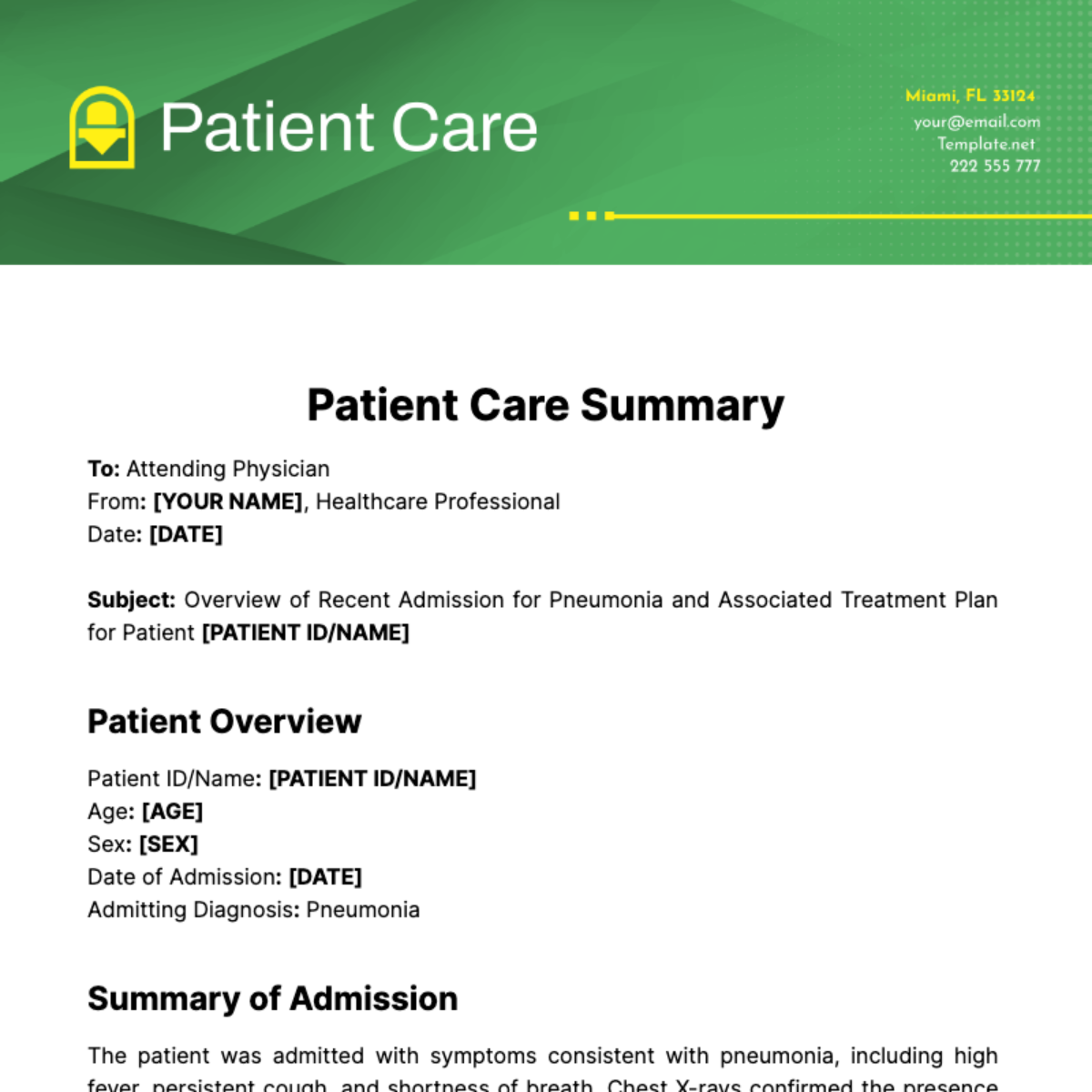
To: Attending Physician
From: [YOUR NAME], Healthcare Professional
Date: [DATE]
Subject: Overview of Recent Admission for Pneumonia and Associated Treatment Plan for Patient [PATIENT ID/NAME]
Patient Overview
Patient ID/Name: [PATIENT ID/NAME]
Age: [AGE]
Sex: [SEX]
Date of Admission: [DATE]
Admitting Diagnosis: Pneumonia
Summary of Admission
The patient was admitted with symptoms consistent with pneumonia, including high fever, persistent cough, and shortness of breath. Chest X-rays confirmed the presence of pneumonia. The patient has a history of COPD, making them more susceptible to respiratory complications.
Vital Signs at Admission
Vital Sign | Measurement |
|---|---|
Temperature | [INSERT MEASUREMENT] |
Blood Pressure | [INSERT MEASUREMENT] |
Heart Rate | [INSERT MEASUREMENT] |
Respiratory Rate | [INSERT MEASUREMENT] |
Oxygen Saturation | [INSERT MEASUREMENT] |
Laboratory Results
Test | Result | Reference Range |
|---|---|---|
WBC Count | [INSERT RESULT] | 4,500-11,000 cells/μL |
CRP | [INSERT RESULT] | <10 mg/L |
Blood Culture | [PENDING/POSITIVE/NEGATIVE] | N/A |
Sputum Culture | [PENDING/POSITIVE/NEGATIVE] | N/A |
Imaging
Chest X-ray and CT scan confirmed the presence of an infiltrate consistent with pneumonia in the right lower lobe.
Treatment Plan
Medications
Antibiotics: [SPECIFIC ANTIBIOTIC], [DOSAGE], [FREQUENCY], to target the suspected pathogens causing pneumonia.
Bronchodilators: [SPECIFIC MEDICATION], [DOSAGE], [FREQUENCY], to manage COPD symptoms and improve breathing.
Corticosteroids: [SPECIFIC MEDICATION], [DOSAGE], [FREQUENCY], to reduce inflammation in the lungs.
Supportive Care
Oxygen Therapy: To maintain oxygen saturation above 92%.
Fluid Management: Adequate hydration while avoiding fluid overload.
Nutritional Support: High-calorie, high-protein diet to support recovery.
Monitoring
Daily Chest X-rays: To monitor progression/resolution of pneumonia.
Vital Signs: Continuous monitoring with particular attention to respiratory rate and oxygen saturation.
Laboratory Tests: Repeating WBC count and CRP in 48 hours to assess response to treatment.
Follow-Up
Pulmonary Function Tests: Scheduled 4-6 weeks post-discharge to evaluate lung function post-infection.
Follow-Up Appointment: With the attending physician within 1 week post-discharge to reassess condition and adjust treatment plan as necessary.
Discharge Criteria
Clinical Stability: No fever for at least 48 hours, improved respiratory symptoms, and ability to maintain oxygen saturation >92% on room air.
Completion of Antibiotic Course: Minimum 5 days, with the decision to extend based on clinical response.
Conclusion
The patient's condition on admission warranted immediate intervention for pneumonia, compounded by their COPD history. The outlined treatment plan aims to address the infection aggressively while managing the patient's underlying respiratory condition and ensuring comprehensive supportive care. Continuous monitoring and follow-up will be crucial in achieving a full recovery and preventing complications.
Summarized By: [YOUR NAME]
- 100% Customizable, free editor
- Access 1 Million+ Templates, photo’s & graphics
- Download or share as a template
- Click and replace photos, graphics, text, backgrounds
- Resize, crop, AI write & more
- Access advanced editor
Discover the latest in patient care documentation with Template.net. Our landing page offers a range of editable and customizable templates, including the Patient Care Summary Template. Harness the power of our Ai Editor Tool to tailor your documents efficiently. Elevate your healthcare documentation effortlessly with Template.net.
